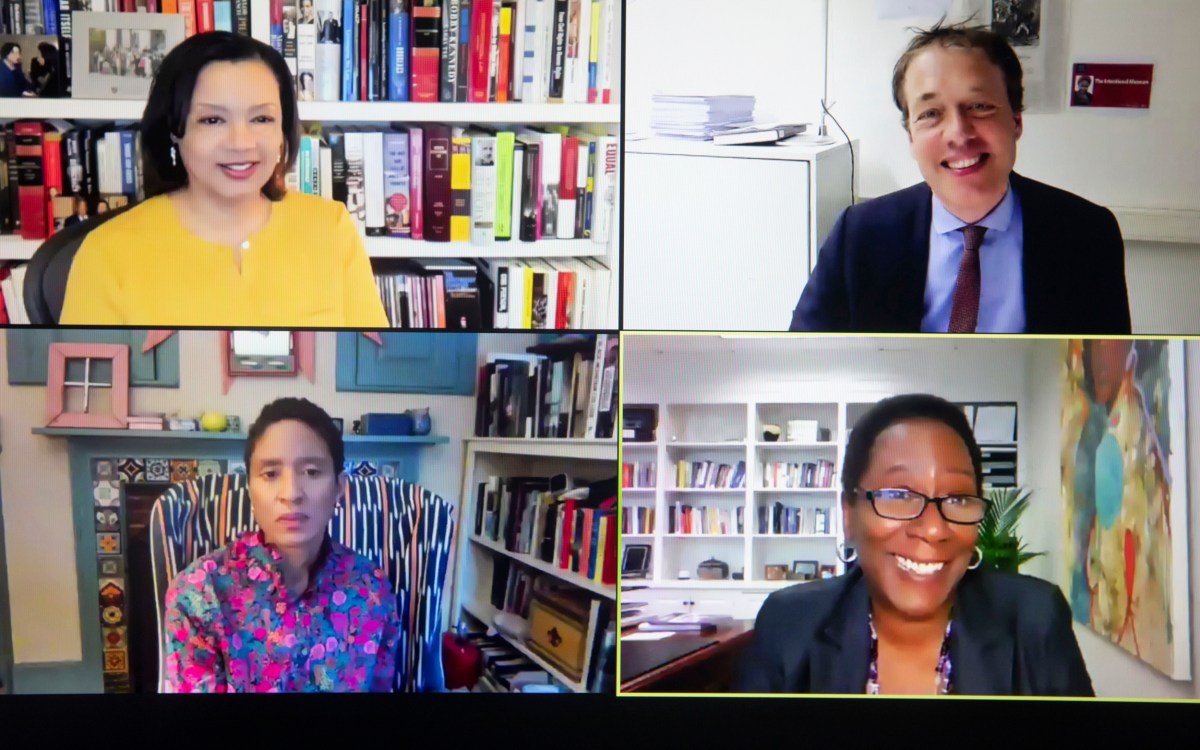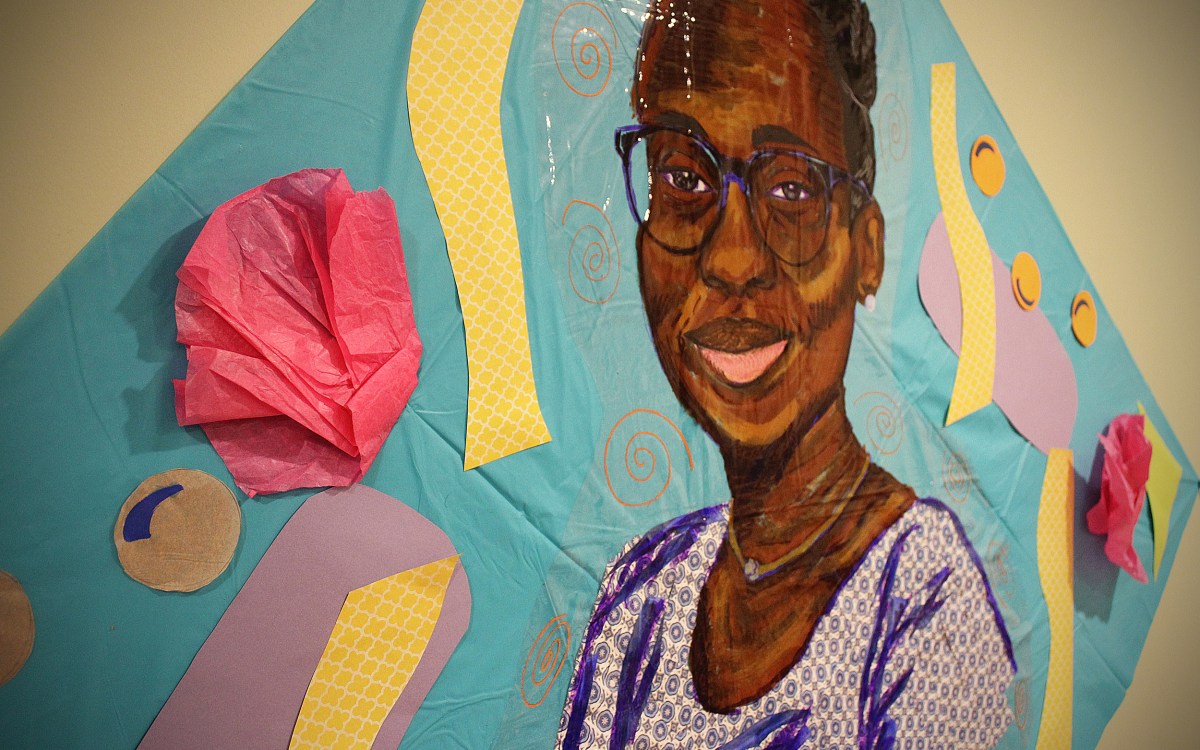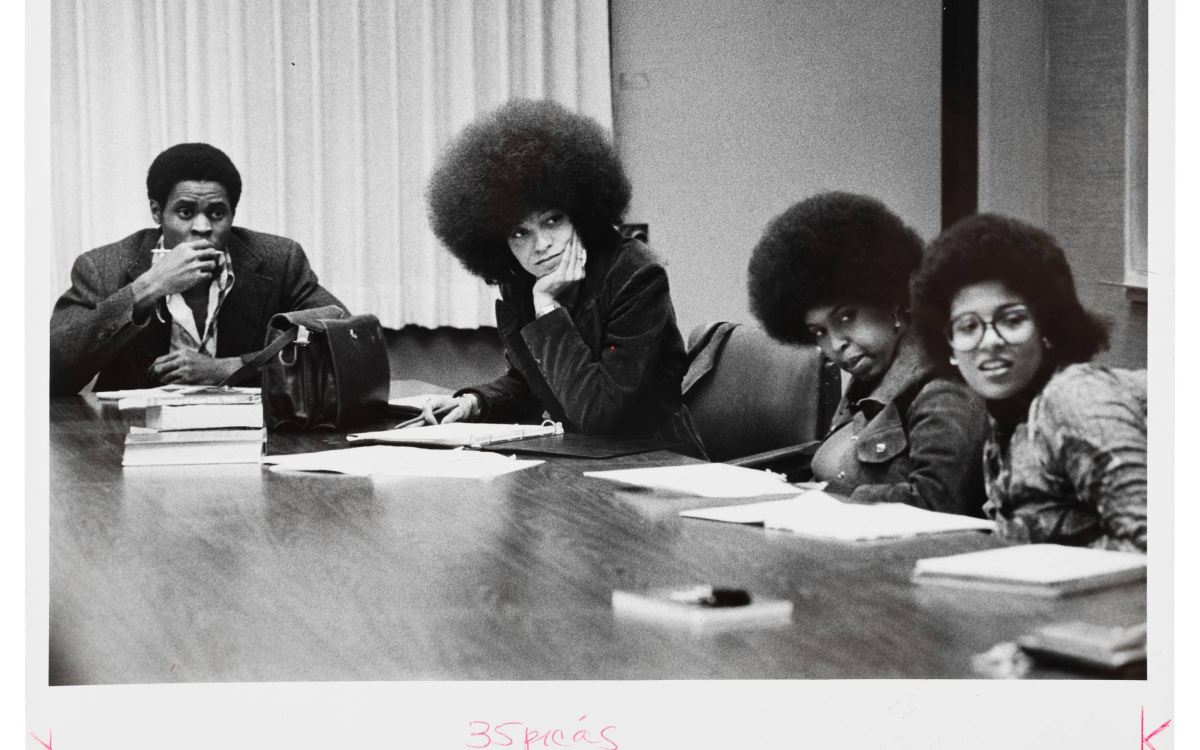Black identities ‘In the City’

Photo by Cami Thomas
Photography exhibit examines justice, grief, and resilience
A new digital exhibition opened March 26 at the Griot Museum of Black History in St. Louis, showcasing six photography-based artists from or living in the city’s north side, as part of a cultural partnership with the Harvard University Commonwealth Project.
The online show “In the City: Memories of Black Presence” is a collaborative effort headed by De Nichols, 2020 Loeb Fellow at the Graduate School of Design; Griot founder and executive director Lois Conley; and Winthrop Professor of History and of African and African American Studies Walter Johnson. It runs through May 28, and is free and open to the public.
Collin W. Elliott, Shabez Jamal, Alana Marie, Cami Thomas, Tiffany Sutton, and Nyara Williams use the power of visual storytelling — and their lenses as young artists — to examine themes of spatial justice, personal grief, resilience, memory, and public health.
“This show gives us the opportunity to connect generationally. We’re looking at the history of St. Louis but drawing parallels to the contemporary and how much alike they are across the continuum,” said Conley.
Williams turned do-rags into 15-foot trains spreading from her subjects’ heads as they posed in a car or stood on a mirrored square in an open field. Called “Birth of a Legend,” she said the title is both personal and about the people in her city.
“One of my superpowers is that I am a dreamer, and I am able to tap into that dream state physically and I can see that in other people. I can see beyond what you’re showing me and that’s how I’m able to capture things within my images without them having to tell me much of what they actually want,” she said in her artist’s statement.
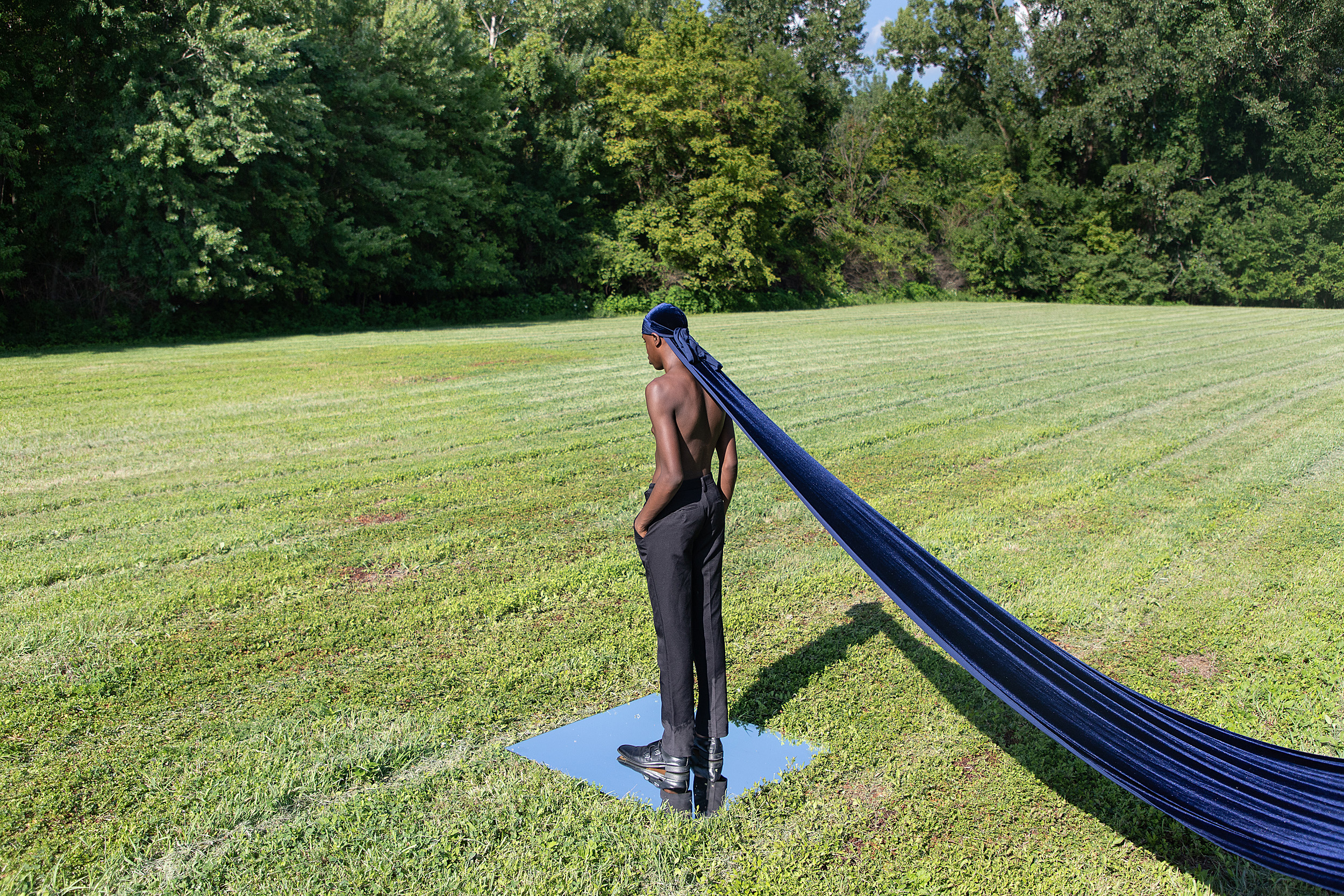
Photo by Nyara Williams
Jamal produced a collage series based on his grandmother’s photo albums, which layered images of family celebrations and gatherings with maps of and advertisements for Kinloch, a town founded by African American refugees that emerged in Missouri after the Civil War and has, according to Johnson, “persisted as a Black city to today.”
“In the ’40s, ’50s, and ’60s, it was a sundown town. It’s right next door to Ferguson, which actually tried to build a wall along the entire border in 2016 based on their fears of the population when it was defiantly an all-white suburb,” he said. “But gradually over the last 25 to 30 years it was put in a deep freeze. It’s now woods with some houses.”
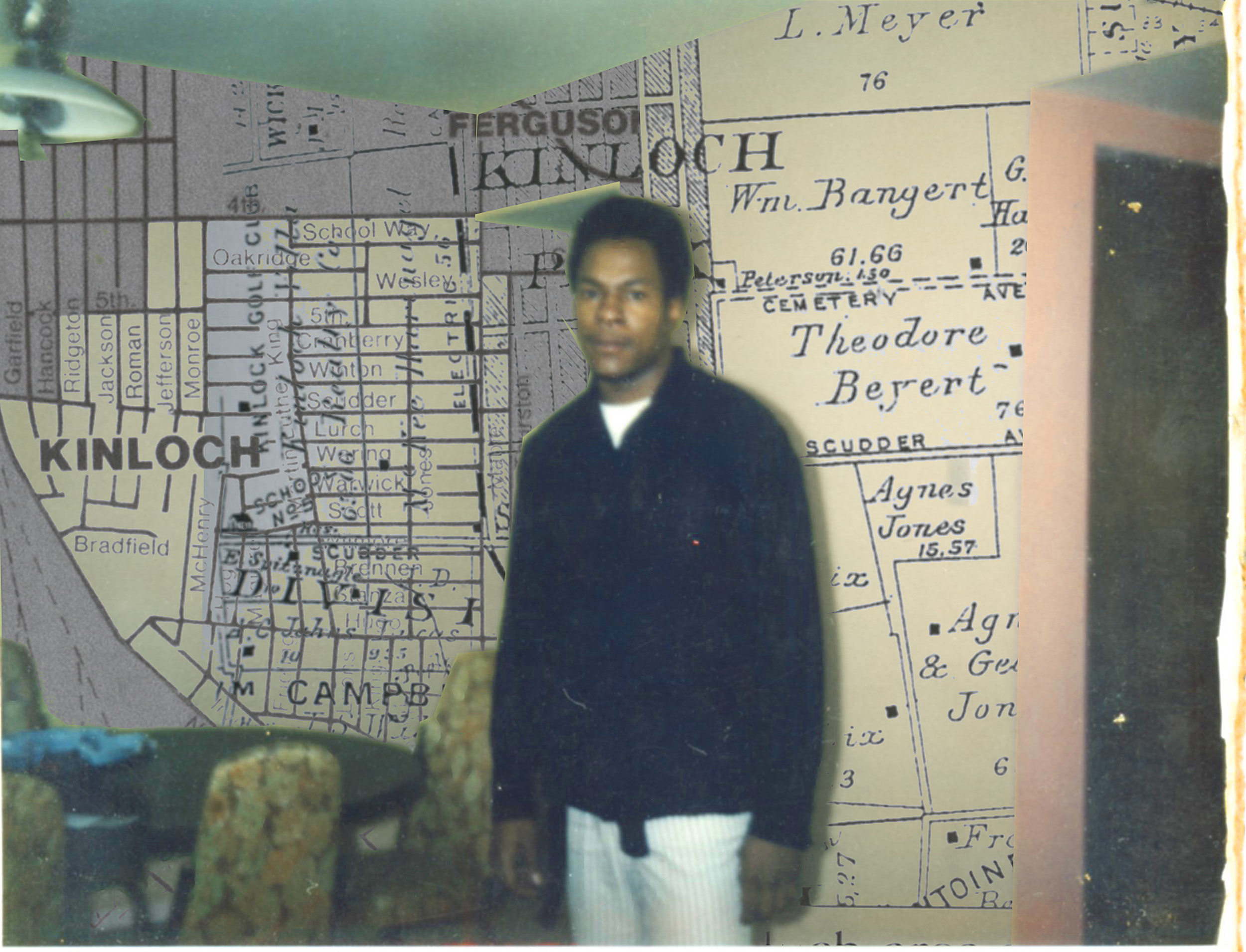
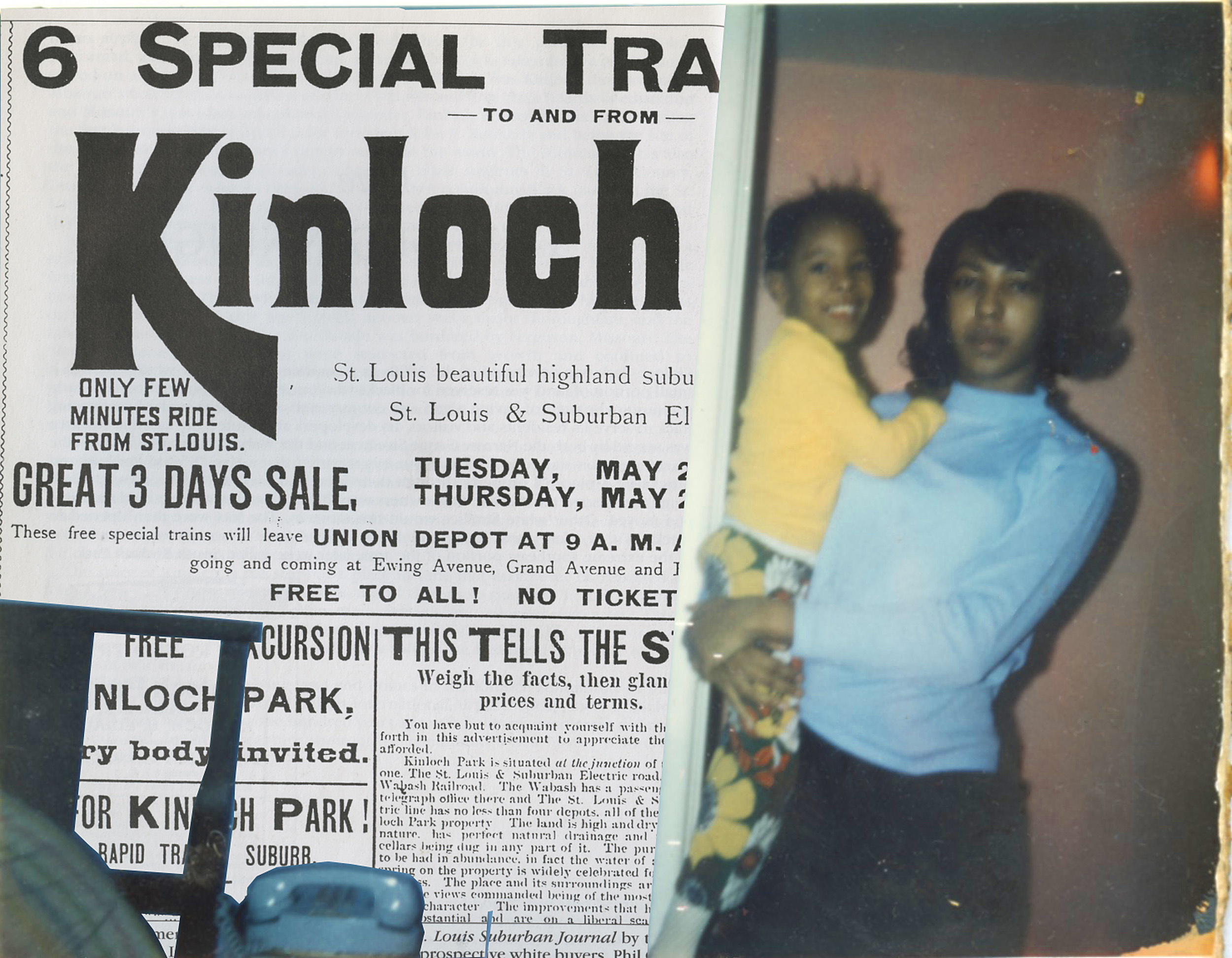
Collages by Shabez Jamal
“In the City” was one of the first projects born out of the Commonwealth Project, which was conceived by musician Tef Poe five years ago when he was at Harvard as an American Democracy Fellow at the Charles Warren Center for Studies in American History. The project’s goal is to bring emerging voices from St. Louis into conversation with academic voices at Harvard to exchange ideas and create a sustained partnership. The exhibition was intended to debut at the Griot during spring break of 2020, followed by an installation at Harvard’s Center for Government and International Studies two months later.
“We wanted to operate on a model of exchange, one of radical hospitality. Let’s welcome each other into the places where we live. I was so depressed about how it ended up, due to COVID,” said Johnson. “But De pulled me out of it. It was important to get this done. It was important for me not to break faith.”
Added Conley: “We never stopped talking about it. The message is: Somebody else values the work of the Griot.”
Especially as the museum celebrates its 25th anniversary this year, Conley wants to elevate the people and parts of the city that have long been underrepresented and undervalued. The Metropolitan Zoological Park and Museum District is one of the largest tax-supported districts in the country, though it does not support any Black-founded, Black-owned, or Black-centered cultural organizations, Nichols said.
“St. Louis doesn’t value our stories the way they value other stories. There’s hardly a story around where St. Louis African Americans didn’t have some role to play. I don’t know when it will ever happen, but I hope we will see it. My hope is that the Griot’s persistence in telling these stories will eventually change people’s perception of Black folks and elevate them, and their role in developing this country, to its rightful place,” Conley said.
Nichols led the project, curating the images and overseeing the shift to the digital format, which debuted alongside the museum’s new website.
“No matter what we do online, it cannot replace the vulnerability of seeing these images in a physical realm. The timing placed us back a year, but my hope is that the digital exhibition is just the beginning. From the audiences we have to the ones we can cultivate even more — perhaps this will bring even more people to the Griot and set a new path for how we do this work moving ahead.”



